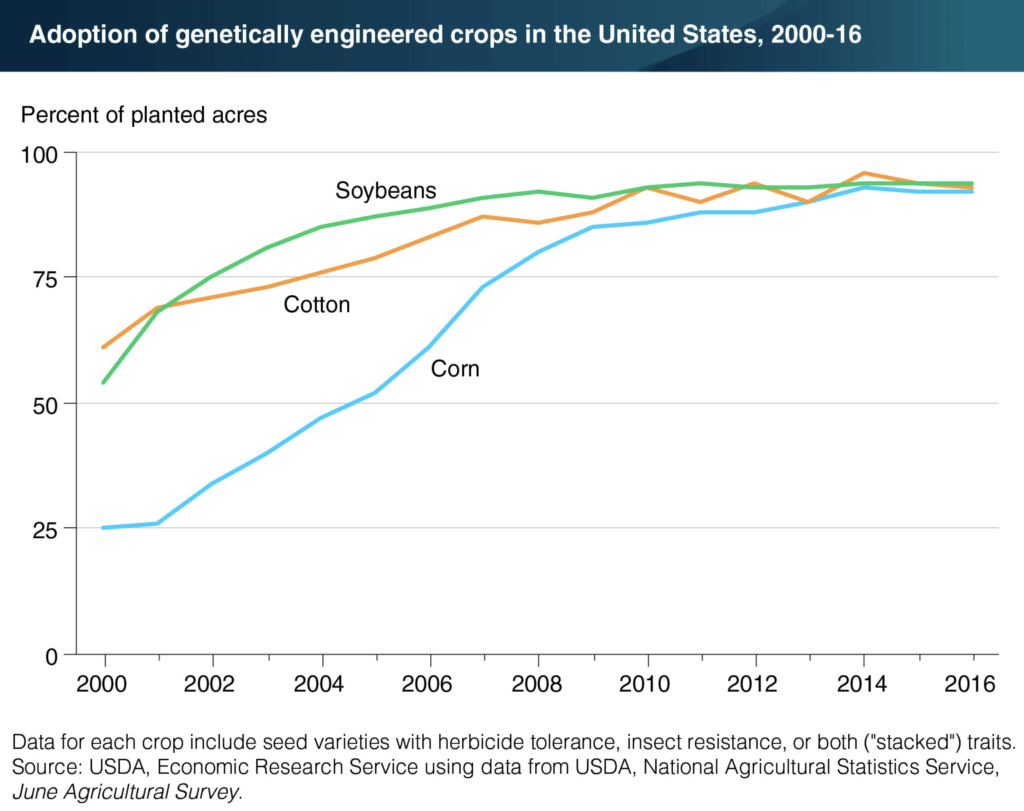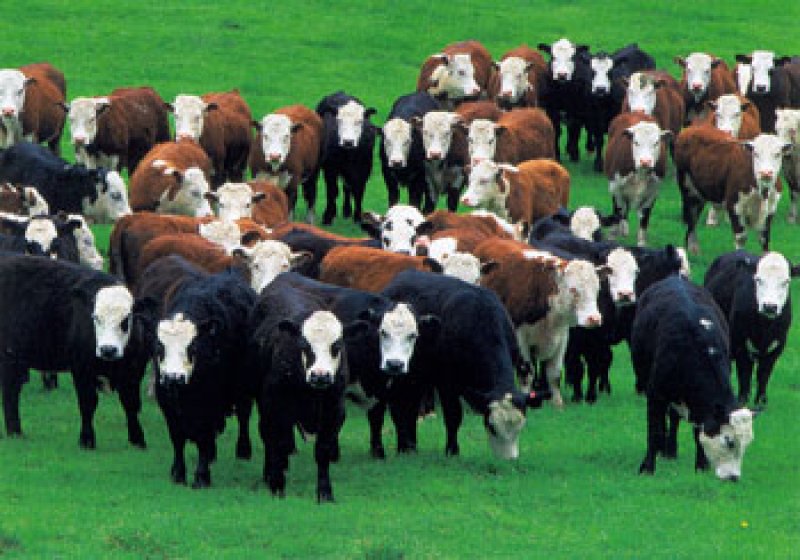[Editor’s Note: Jayson Lusk is a food and agricultural economist and head of the Agricultural Economics Department at Purdue University.]
I saw some recent discussion on Twitter of this post by Emily Cassidy in which she discusses her 2013 paper….
She writes:
…Over two-thirds of the calories grown in the U.S. are fed to livestock. And for every eight calories of corn and soybean fed to livestock, only one of those calories ends up on our plates.
[Editor’s note: approximately 95% of all corn and soybeans grown in the US is genetically engineered.]
Beyond “preferences”, why do we grow so much corn, soy, and wheat in the U.S.? A primary answer is that these plants are incredibly efficient at converting solar energy and soil nutrients into calories…. Moreover, these calories are packaged in a form (seeds) that are highly storeable and easily transportable….
[One way to view livestock] is that they are good at converting one form of energy that is highly storeable/transportable but untasty (field corn, soy, sorghum) to another form (eggs, meat, dairy) that we like to eat. Rarely do these sorts of research papers include the the calories (or energy) used in food processing.
…
I’m not going to say it’s perfectly rational for the U.S. to devote the majority of it’s cropland to corn/soy/wheat, but I think this discussion suggests it’s not irrational either.
The GLP aggregated and excerpted this article to reflect the diversity of news, opinion, and analysis. Read full, original post: Redefining Agricultural Yields
































